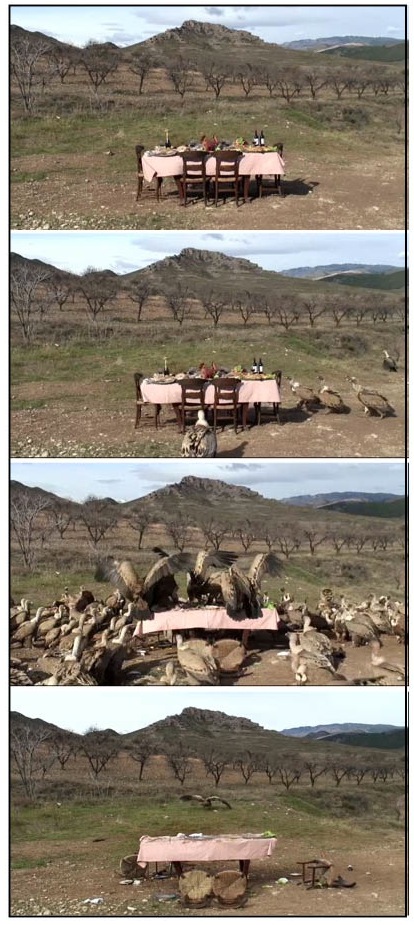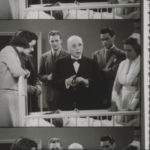Instant Cinema: Experimental Media Art Online
 In moving-image art, as in any other medium, producing the innovations that matter for the future of the art form risks going largely unnoticed in the present.
In moving-image art, as in any other medium, producing the innovations that matter for the future of the art form risks going largely unnoticed in the present.
Festivals and museum exhibitions have traditionally been the prestigious arenas for experimental film, video, and computer art, but for reaching a global viewership, the Internet arguably trumps all, particularly as connection speeds and quality continually improve.
That’s the rationale for Instant Cinema, a platform for experimental film, video and computer art whose stated goal is “to compensate for half a century of under-exposure of film/video and computer art by exhibiting some of the great classics of recent history, side by side with the work of today’s most talented media artists.”
 An initiative by filmmaker Rene Daalder and EYE Film Institute Netherlands in association with designer Folkert Gorter, with financial support from the Mondriaan Foundation, Instant Camera is viewable by anyone, but makers of films and computer art can post their work on the site only if invited to do so, either by an existing exhibitor, or by the managers of the site. Invitees may become “members” and then can invite five others to join and contribute their work.
An initiative by filmmaker Rene Daalder and EYE Film Institute Netherlands in association with designer Folkert Gorter, with financial support from the Mondriaan Foundation, Instant Camera is viewable by anyone, but makers of films and computer art can post their work on the site only if invited to do so, either by an existing exhibitor, or by the managers of the site. Invitees may become “members” and then can invite five others to join and contribute their work.
The site is in beta mode, but a good deal of material is already on display. It ranges across the new-media-art spectrum, and rewards prolonged exploration and viewing. A couple of highlights: an astonishing 10-minute film by Spanish artist Greta Alfaro of vultures devouring a sumptuous outdoor meal, and a chilling commentary on the merger of warfare and video gaming.
The postings reflect a history of experimental moving-image art in which makers have always searched for expressive forms, often inspired by art forms of their day, Rene Daalder writes in an introduction to the site. So, for example, “generations of experimental filmmakers in America stayed close to the familiar art forms of their time. Taking his cues from animation, Oskar Fischinger presented his ‘motion paintings’ as visual counterparts to music, inventing a genre that would come to be known as ‘visual music.’” For his part, Stan Brakhage “created abstract art by scratching his images directly on the celluloid, while other members of the ‘New American Cinema’ movement credited modernist poets like Ezra Pound as their main inspiration.”
But that, he explains, has led to confusion about how best to exhibit such work. Museums and galleries have of course had their own priorities, often monetary, when it has come to displaying work. That, Daalder notes, has led artists to develop a variety of strategies of distribution: “In the 1960’s,” for example, “Gerry Schum, an enterprising German cameraman who shot classic films for such stellar artists as Joseph Beuys, Richard Serra, Gilbert & George and many others, finally took issue with the museum world’s in-hospitability towards the moving image and made a bold move by soliciting the electronic mass medium of television to showcase his seminal films. To everyone’s surprise he succeeded to establish what he called his TV Gallery. But after only two broadcasts he found a note on the door of his office, reading: ‘Anyone who talks about art here will be shown the exit.’”
The result of such inhospitable reception of visual media works has been that “most classic masterpieces of film/video art are still lingering in obscurity.” Some entire genres, such as “visual music,” are virtually unknown outside specialist circles.
Perhaps, he writes, the Internet will provide a better medium of distribution. Certainly, it does not look like becoming a profit-generating – or, even, cost-recovering – medium, but… there you have it.
Writes Daalder (who maintains a similar site for presenting his own work): “Motivated by the firm belief that scarcity is no longer an option, Instant Cinema takes sides with Gerry Schum as we set out to show as many classics as we can side by side with the most talented emerging artists of today, exposing film, video and computer art to the broadest possible audience in a respectful context of which Gerry Schum would have approved.”
– Peter Monaghan
Previous Post: National Film Preservation Foundation Helps to Save Films by Tod Browning, John Cage, and Many Others
Next Post: J-Film Goes Global





